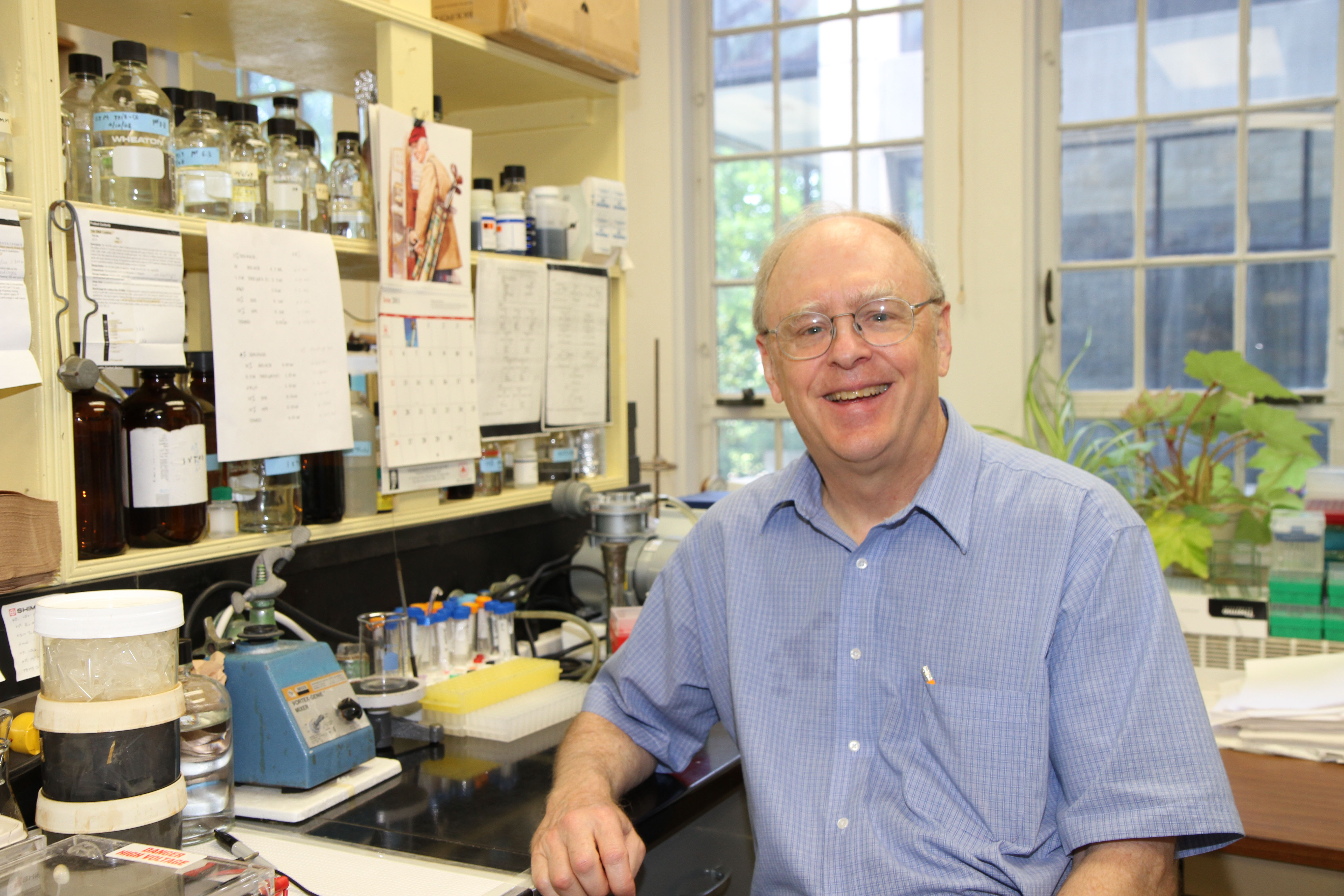Robert H. White awarded $1 million NSF grant to research origin of life

Virginia Tech biochemist Bob White says he wrestles with an insistent question: Was earth's first life system "simple" in chemical terms, or extremely complicated? His quest to know and understand the origin of life has been the hallmark of his almost 40 year career and is the driving force of a recent $1 million National Science Foundation grant.
White believes that clues lie in the study of protobiochemistry -- the various chemistries that occurred in the ocean after the early earth's surface cooled considerably and formed hot liquid oceans. This change in the earth is estimated to have occurred 4.4 billion years ago, approximately 0.6 billion years before life on earth. Some scientists hope metabolic fossils -- remnants of the metabolic qualities that sustained these first organisms -- might be found in modern day organisms that live in the same fiery, aquatic conditions.
White says his search led him to a present day organism called Methanocaldococcus jannaschii, or "MJ" for short. Found on the ocean floor near volcano-like hydrothermal vents nicknamed "black smokers," MJ lives in extremely hot conditions (200 degrees Fahrenheit) similar to those that ancient organisms dwelling in primitive anaerobic oceans experienced.
So far, White and his lab members have found that many of the metabolic processes of MJ are different from most present day organisms. Rather than breaking down sugar into energy through a process called glycolysis, MJ cells catalyze the loss of formaldehyde from a hexulose-phosphate to form ribose phosphate. This type of reaction is thought to be an ancient metabolic process used for the early formation of sugars -- long before present-day glycolysis practices. According to White, understanding how this primitive metabolism functions could help researchers work backwards towards understanding the formation of the very first cell.
"The nature of the chemical reactions leading to the origin of life is one of the great unsolved mysteries of biochemistry," White says. "I am completely mystified about how the first cell started. It's incredible how inorganic material has come alive and can now study its own origin and the origin of compounds -- it's simply amazing."
For the next four years, the NSF grant will fund the postdoctoral students, research fellows, graduate and undergraduate students, and upgraded equipment needed to continue White's research.
White is an affiliated faculty member with Fralin Life Science Institute at Virginia Tech, and an associate professor of biochemistry. He received a bachelor's degree in chemistry from the University of Indiana in 1968 and a Ph.D. in biochemistry from the University of Illinois in 1974.




